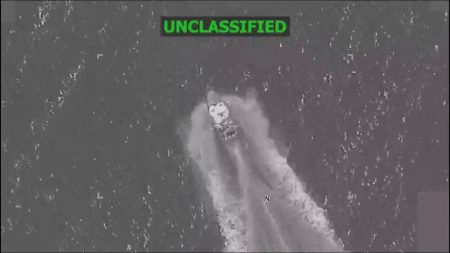Kyiv Synagogue Attack: Investigating the Rise of White Supremacist Violence in Ukraine
Authorities Link Recent Synagogue Attack to White Supremacist Ideology Amid Growing Concerns of Extremism
In a troubling development that has sent shockwaves through Ukraine’s Jewish community and raised alarms among security experts worldwide, intelligence sources have identified what appears to be white supremacist motivations behind the recent attack on a prominent Kyiv synagogue. The incident, which occurred during a period of heightened global antisemitism, adds to mounting evidence of far-right extremism gaining traction in parts of Eastern Europe. According to information shared through intelligence-affiliated Telegram channels, investigators are treating the attack as ideologically motivated violence consistent with white supremacist patterns seen in similar incidents across Europe and North America.
The assault on the historic synagogue, a cultural landmark that has stood as a symbol of Jewish resilience for generations, comes at a particularly sensitive moment in Ukraine’s complex social landscape. “This appears to be a calculated attempt to sow division at a time when national unity is crucial,” noted Dr. Mykhailo Kovalenko, a security analyst specializing in extremist movements in Eastern Europe. The attack’s apparent ideological underpinnings reflect a disturbing internationalization of white supremacist violence, where perpetrators draw inspiration from similar acts worldwide, often radicalized through online networks that transcend national boundaries. Intelligence sources, speaking on condition of anonymity due to the sensitivity of ongoing investigations, indicated that digital forensics have uncovered connections to known extremist communications channels, suggesting the perpetrator did not act in isolation but rather as part of a broader ideological ecosystem.
The Growing Threat of Transnational Extremism: How White Supremacist Networks Operate Across Borders
The intelligence community has been monitoring with increasing concern the evolution of white supremacist movements from primarily domestic threats to sophisticated transnational networks. “What we’re witnessing is the globalization of hate,” explained Dr. Sophia Weiss, who leads the Center for Monitoring Extremist Ideologies at Central European University. “These are no longer isolated individuals acting on local grievances, but participants in international movements who share tactics, ideology, and encouragement.” The Telegram channels that reported on the attack’s white supremacist connections represent a complex information landscape where intelligence agencies increasingly monitor extremist communications while sometimes deliberately releasing information to counter radical narratives or alert the public to emerging threats.
The digital footprints associated with the synagogue attack follow patterns consistent with other ideologically motivated violent extremism (IMVE) incidents across Europe. Digital forensics experts have noted the characteristic cross-pollination of extremist ideas that occurs when white supremacist content created in one country inspires violence in another. “The suspect appears to have consumed a steady diet of international extremist content,” said cybersecurity specialist Anton Davidovich, who consults with European law enforcement agencies on tracking online radicalization. “We’re seeing references to accelerationist texts from America, neo-Nazi symbolism from Scandinavia, and tactical approaches documented in extremist channels from multiple countries.” This international dimension complicates the work of national security agencies, who must now collaborate across borders to monitor threats that no longer respect national boundaries.
Ukraine’s Jewish Community Responds with Resilience Amid Rising Global Antisemitism
In the wake of the attack, Ukraine’s Jewish community has demonstrated remarkable solidarity and resilience. “We will not be intimidated,” declared Rabbi Yaakov Dov Bleich, Chief Rabbi of Kyiv and Ukraine, during a community gathering held days after the incident. “This synagogue has stood through wars, Soviet repression, and now this. We will continue to be a light in our community.” The attack has prompted an outpouring of support from Ukrainians of all backgrounds, with interfaith vigils organized across the country and prominent political and cultural figures making public statements condemning antisemitism and extremist violence.
Community leaders have emphasized the importance of distinguishing between isolated extremist actions and broader societal attitudes. “What we’ve seen in the aftermath is that the vast majority of Ukrainians stand firmly against this hatred,” noted Hannah Rosenthal, director of the Kyiv Center for Jewish Cultural Heritage. “The response from our neighbors, from people of all faiths and backgrounds, has been overwhelmingly supportive.” Nevertheless, the attack has intensified existing concerns about the global surge in antisemitism, which has manifested in vandalism, harassment, and violence targeting Jewish communities from Paris to Pittsburgh. Security measures at Jewish institutions across Ukraine have been enhanced, with international Jewish organizations providing additional resources for community protection. “This is unfortunately part of a global pattern,” observed Daniel Goldman of the World Jewish Congress. “What happened in Kyiv connects to what we’re seeing in too many countries around the world.”
Security Agencies Adapt to Combat Evolving Ideological Threats in Digital Age
The intelligence community’s response to the attack highlights the evolving approaches security agencies must employ to counter ideologically motivated violence in the digital age. Traditional methods of infiltrating extremist groups have been supplemented by sophisticated digital surveillance and international cooperation. “The challenge we face today is that radicalization often happens in virtual spaces rather than physical meetings,” explained retired intelligence officer Vasyl Petrenko. “Someone can be alone in their room but connected to a global network of extremism.” The Telegram channels that reported on the white supremacist connections to the attack represent a new front in this intelligence landscape—encrypted messaging platforms where extremist content circulates alongside legitimate communications, creating complex challenges for monitoring and intervention.
Security experts note that the attack fits a pattern of what extremism researchers call “inspired terrorism,” where individuals act without direct orders but in response to ideological content that implicitly or explicitly encourages violence. “These attackers often believe they’re soldiers in an ideological war,” said Dr. Elena Konovalova, who studies radicalization processes at Kyiv National University. “They consume content that presents a worldview where violence is not only justified but necessary.” The intelligence agencies tracking such threats must balance privacy concerns, civil liberties, and security imperatives while developing more sophisticated approaches to identifying potential threats before they materialize into violence. International cooperation has become essential, with agencies sharing information about extremist networks across borders. “No country can address this threat in isolation,” noted one security official. “The networks of hate don’t respect national boundaries, so our response must be equally transnational.”
Beyond the Attack: Addressing Root Causes of Extremism Requires Societal Approach
While immediate security responses are crucial, experts emphasize that countering ideologically motivated violence requires addressing deeper societal factors that make extremist narratives appealing to vulnerable individuals. “Security measures alone cannot solve this problem,” argued Dr. Mikhail Shevchenko, who leads deradicalization programs in Eastern Europe. “We need to understand and address the conditions that make white supremacist ideologies attractive to certain individuals.” These approaches include education programs that build resilience against extremist propaganda, community initiatives that foster social cohesion, and economic policies that address the marginalization and disillusionment extremist recruiters often exploit.
The attack on Kyiv’s synagogue, with its apparent white supremacist motivations, serves as a stark reminder of the persistent threat posed by ideological extremism in modern societies. As intelligence agencies continue their investigation, drawing on information shared through channels like the Telegram groups that first reported the white supremacist connection, the broader community must confront the uncomfortable reality that such hatred exists within otherwise peaceful societies. “This isn’t just a security issue—it’s a challenge to our fundamental values,” reflected Ukrainian cultural historian Oleksandra Kovalchuk. “How we respond defines not just our security protocols but who we are as a society.” The path forward requires not only vigilance from security services but a commitment from citizens, communities, and institutions to reject the divisive ideologies that fuel such violence and to build societies where extremist narratives find no fertile ground.











